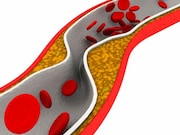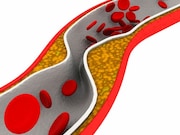Tag: Peripheral Artery Disease
Study Looks at Risk for Bleeding in Percutaneous Tx of PAD
Major bleeding in lower-extremity peripheral vascular interventions tied to higher in-hospital mortality
Hot Water Therapy Aids Patients With Peripheral Arterial Disease
Small study shows it improves functional ability, has potential for cardiovascular conditioning
FDA Issues Update on Mortality Risk With Paclitaxel-Coated Products
Preliminary analyses revealed approximately 50 percent increased risk at five-year follow-up
Paclitaxel Exposure in Vascular Device Not Linked to Mortality
No deaths thought to be related to use of paclitaxel drug-coated balloons for vascular procedures in PAD
Smoking Tied to Peripheral Artery Disease in African-Americans
Current smokers had increased risk for measures of subclinical peripheral artery disease
FDA Investigating Paclitaxel-Coated Balloons, Paclitaxel-Eluting Stents
Investigation triggered by meta-analysis showing possible increased mortality in PAD patients at 2 years
Appropriate Use Criteria Released for Peripheral Artery Intervention
Guideline-directed medical therapy, lifestyle and risk factor modification are cornerstones of therapy
USPSTF: Evidence Lacking for ABI for PAD Screen in Asymptomatic
No direct evidence, limited indirect evidence for benefits of PAD screening in asymptomatic population
Exercise Intervention Doesn’t Improve Walking Ability in PAD
Smaller mean change from baseline to follow-up in 6-minute walking distance with exercise intervention
About One in Six Readmitted Post-Revascularization for PAD
Most common causes of readmission were procedural complications, sepsis, diabetes complications














